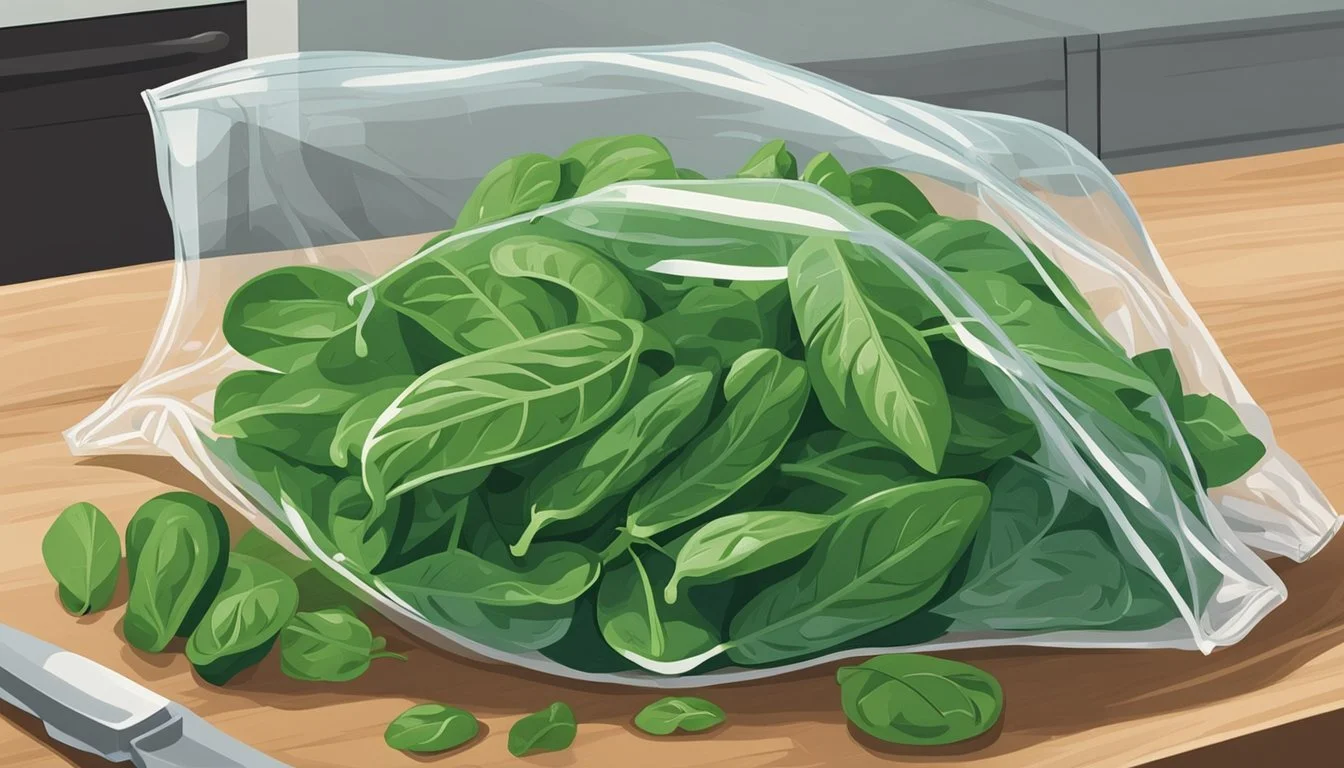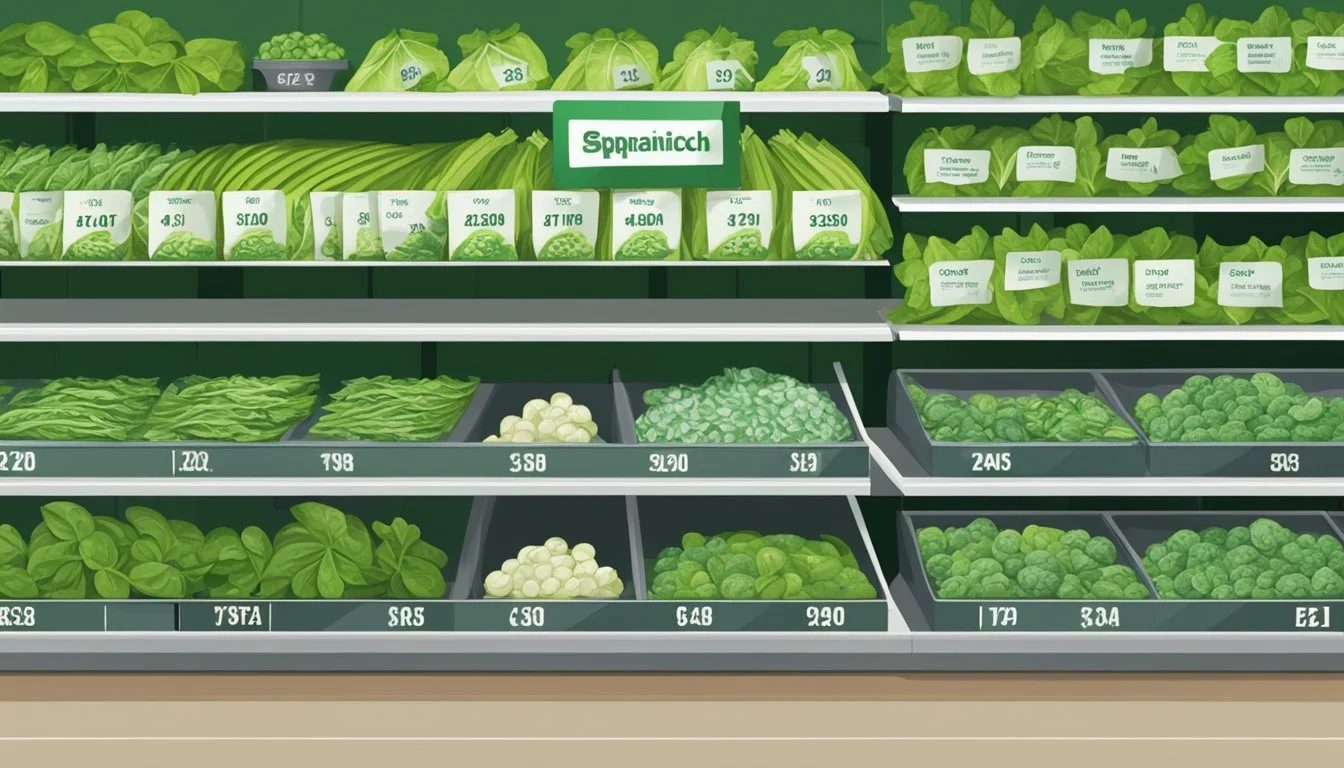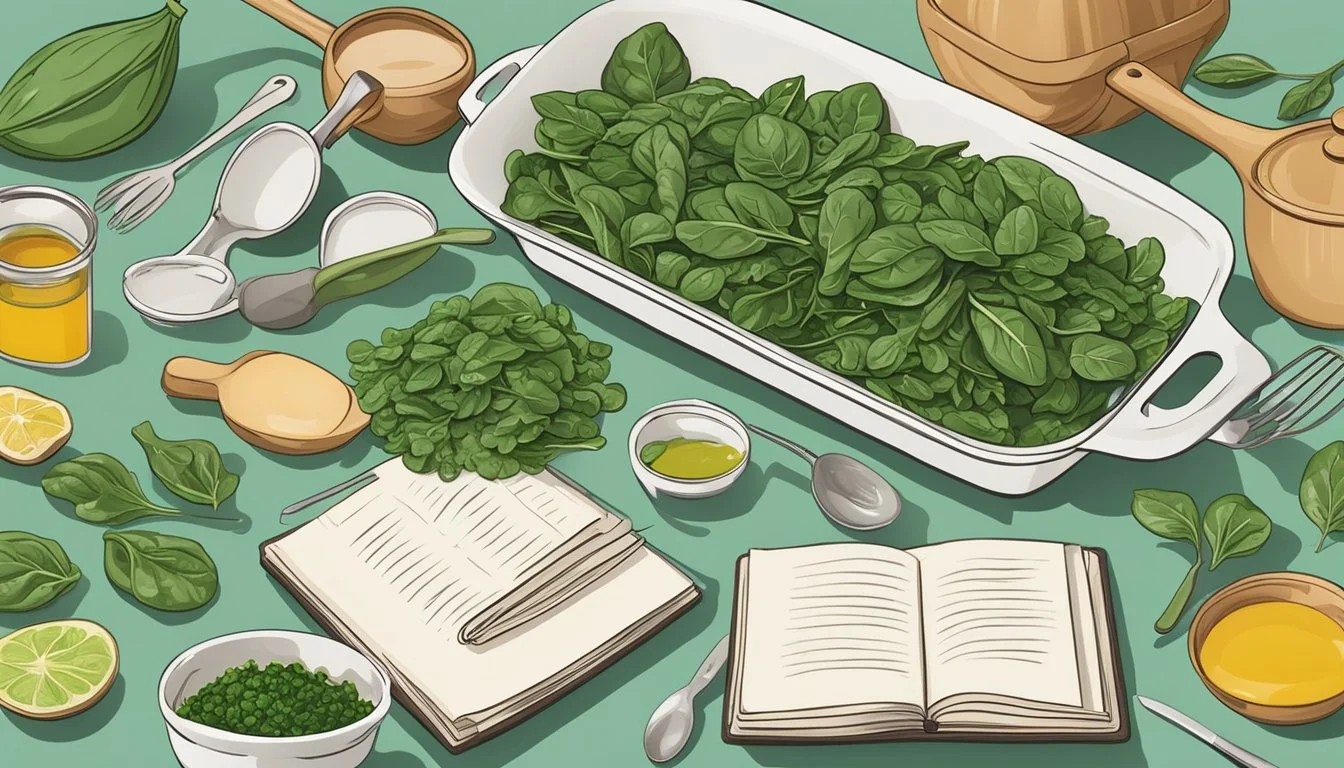Frozen Spinach vs Fresh: Reddit's Culinary Wisdom Unveiled
Frozen spinach and fresh spinach are both popular options for home cooks, but they have distinct differences in convenience, nutrition, and culinary applications. Frozen spinach can be just as nutritious as fresh spinach, and in some cases may even retain more nutrients due to being quickly frozen after harvesting. This preservation method locks in essential vitamins and minerals, making frozen spinach a smart choice for health-conscious consumers.
Many Reddit users praise the convenience and cost-effectiveness of frozen spinach. It has a longer shelf life than fresh spinach and can be easily incorporated into various dishes like spinach dips, lasagnas, and egg-based bakes. Fresh spinach, on the other hand, is often preferred for salads and dishes where texture is crucial.
The choice between frozen and fresh spinach often comes down to personal preference and the specific recipe requirements. While fresh spinach offers a crisp texture ideal for certain dishes, frozen spinach provides year-round availability and can be a practical option for cooking larger quantities. Both forms of spinach contribute valuable nutrients to a balanced diet.
Nutritional Comparison of Frozen and Fresh Spinach
Frozen and fresh spinach offer similar nutritional benefits, with some key differences in specific nutrient content and bioavailability. Both forms provide essential vitamins, minerals, and antioxidants.
Vitamins and Minerals Content
Spinach is rich in vitamins A, C, K, and folate. Fresh spinach typically contains higher levels of vitamin C immediately after harvest. Frozen spinach, however, often retains more vitamin C over time due to the flash-freezing process.
Vitamin A, in the form of beta-carotene, remains relatively stable in both fresh and frozen spinach. This nutrient is crucial for eye health and immune function.
Mineral content, including iron, calcium, and potassium, is comparable between fresh and frozen spinach. These minerals play vital roles in various bodily functions, from bone health to oxygen transport.
Impact of Freezing on Nutrients
The flash-freezing process used for spinach helps preserve many nutrients. This method quickly locks in vitamins and minerals, preventing significant degradation.
Freezing can cause some cell wall breakdown, which may increase the bioavailability of certain nutrients. This means the body might absorb some nutrients more easily from frozen spinach.
Antioxidants, such as flavonoids and carotenoids, are generally well-preserved in frozen spinach. These compounds help protect cells from damage and may have anti-inflammatory properties.
Iron and Folate Levels
Iron content remains stable in both fresh and frozen spinach. This mineral is essential for oxygen transport in the blood and overall energy levels.
Folate levels can be slightly higher in fresh spinach immediately after harvest. However, frozen spinach often maintains its folate content better during storage.
Both forms of spinach are excellent sources of folate, which is crucial for DNA synthesis and cell division. Adequate folate intake is especially important during pregnancy and for overall cardiovascular health.
Culinary Uses and Preparation Methods
Spinach, whether fresh or frozen, offers versatility in the kitchen. Its adaptability shines through various cooking techniques and recipe applications.
Best Practices for Cooking with Spinach
Sautéing spinach quickly over high heat preserves its nutrients and vibrant color. For soups and stews, add spinach near the end of cooking to maintain texture. In pasta dishes, mix raw spinach into hot pasta, allowing residual heat to wilt the leaves. Frozen spinach works well in casseroles and dips, providing concentrated flavor.
For salads, use fresh spinach leaves and dress just before serving to prevent wilting. When boiling spinach, use minimal water and cook briefly to retain nutrients. Steaming is another gentle method that maintains flavor and texture.
Comparison of Texture and Flavor
Fresh spinach offers a crisp texture and mild, slightly sweet taste. It wilts quickly when cooked, reducing significantly in volume. Frozen spinach has a softer texture and more concentrated flavor due to the freezing process.
In cooked dishes, the texture difference between fresh and frozen becomes less noticeable. Frozen spinach works well in recipes where a denser texture is desired, such as spinach dips or stuffed pasta.
Fresh spinach provides a brighter, more delicate flavor ideal for salads and light sautés. Frozen spinach has a stronger, earthier taste that stands up well in robust dishes like curries or hearty soups.
Effective Thawing and Blanching Techniques
To thaw frozen spinach, place it in a colander and run cool water over it. Alternatively, microwave on defrost setting, stirring occasionally. Once thawed, squeeze out excess moisture before using in recipes.
Blanching fresh spinach before freezing helps retain color, texture, and nutrients. Dip spinach in boiling water for 30 seconds, then immediately transfer to an ice bath. Drain well and pat dry before freezing.
For quick use, frozen spinach can be added directly to hot dishes without thawing. This works well for soups, stews, and sauces. When using in cold dishes, thaw and drain thoroughly to prevent excess water from diluting flavors.
Handling Fresh vs. Frozen Spinach
Fresh and frozen spinach have distinct characteristics that affect how they are handled and used. Proper storage, moisture management, and convenience considerations play key roles in choosing between the two options.
Proper Storage for Maximum Freshness
Fresh spinach requires careful storage to maintain its crispness and nutritional value. Store unwashed spinach in a plastic bag with a paper towel to absorb excess moisture. Keep it in the refrigerator's crisper drawer at 40°F (4°C) or below. Use within 3-5 days for best quality.
Frozen spinach has a much longer shelf life. Store unopened packages in the freezer at 0°F (-18°C) for up to 10-12 months. Once thawed, use within 3-4 days. Avoid refreezing thawed spinach to prevent texture changes and potential bacterial growth.
Reducing Waste and Excess Moisture
Fresh spinach wilts quickly and can become slimy if not used promptly. To reduce waste, only wash the amount needed for immediate use. Spin dry thoroughly to remove excess water before cooking or serving.
Frozen spinach requires thawing and draining before use. Place it in a colander and press out excess moisture with the back of a spoon or squeeze it in a clean kitchen towel. This step is crucial for recipes like spinach dips or pies to avoid a watery texture.
Convenience and Shelf Life Factors
Frozen spinach offers significant convenience advantages. It's pre-washed, chopped, and ready to use after thawing. The freezing process locks in nutrients, making it a nutritious option year-round.
Fresh spinach provides versatility for raw applications like salads. It maintains a crisp texture when lightly cooked. However, it requires more prep time and has a shorter shelf life.
For long-term storage and recipes requiring cooked spinach, frozen varieties often prove more practical. They reduce prep time and minimize food waste, especially for infrequent users.
Cost and Affordability
Frozen spinach often provides a more budget-friendly option compared to fresh spinach, while still offering similar nutritional benefits. The price difference and nutrient retention make frozen spinach an attractive choice for cost-conscious consumers.
Price Comparison between Fresh and Frozen
Frozen spinach typically costs less per serving than fresh spinach. A 10-ounce package of frozen spinach usually ranges from $1 to $3, while an equivalent amount of fresh spinach can cost $3 to $5 or more.
The price gap widens during off-seasons when fresh spinach becomes more expensive. Frozen spinach maintains a relatively stable price year-round, making it a reliable budget option.
Bulk purchases of frozen spinach can further reduce costs. Many stores offer larger bags at discounted prices, allowing consumers to stock up and save.
Balancing Nutritional Value with Budget
Frozen spinach offers comparable nutritional benefits to fresh spinach at a lower price point. The freezing process locks in nutrients, preserving vitamins and minerals effectively.
Folate, an essential B vitamin, is better retained in frozen spinach compared to fresh. This makes frozen spinach a cost-effective way to meet daily folate requirements.
Frozen spinach also reduces food waste. Its longer shelf life means less spoilage, saving money in the long run. Consumers can use only what they need and keep the rest frozen for future use.
For those on tight budgets, frozen spinach provides an affordable way to incorporate nutrient-dense greens into their diet without sacrificing nutritional quality.
Health Implications
Spinach, whether fresh or frozen, offers numerous health benefits. Its nutrient profile makes it a valuable addition to any diet, supporting various bodily functions and potentially reducing the risk of certain diseases.
Benefits of Spinach in a Healthy Diet
Spinach is often labeled a superfood due to its impressive nutritional content. It's rich in vitamins A and C, folate, iron, and calcium. These nutrients support immune function, bone health, and blood cell production. Spinach also contains antioxidants like lutein and zeaxanthin, which are beneficial for eye health.
The leafy green is high in fiber, promoting digestive health and helping maintain stable blood sugar levels. Its low calorie content makes it an excellent choice for weight management. Spinach provides plant-based protein, making it valuable for vegetarians and vegans.
Researchers have found that spinach consumption may help reduce the risk of heart disease. Its high potassium content supports healthy blood pressure levels.
Considerations for Specific Nutritional Needs
While spinach is generally beneficial, some individuals may need to exercise caution. Those taking blood thinners should consult their doctor, as spinach's high vitamin K content can interfere with these medications.
People with kidney stones or a predisposition to them might need to limit spinach intake due to its oxalate content. Cooking spinach can reduce oxalate levels.
For individuals with iron deficiency, pairing spinach with vitamin C-rich foods can enhance iron absorption. This is particularly important when consuming frozen spinach, which may have lower vitamin C levels than fresh.
Baby spinach tends to be more tender and may be easier to digest for some people. Raw spinach offers the highest nutrient content, but cooking can make certain nutrients more bioavailable.
Versatility in Recipes
Frozen spinach offers remarkable flexibility in cooking, adapting well to various dishes and preparation methods. Its convenience and long shelf life make it a practical choice for many home cooks.
Substitutes in Various Dishes
Frozen spinach serves as an excellent substitute for fresh in many recipes. It works well in casseroles, providing a nutrient boost without altering the dish's texture significantly. In lasagna or stuffed shells, thawed and drained frozen spinach mixes easily with ricotta cheese for a flavorful filling.
For quiches and frittatas, frozen spinach saves time on washing and chopping. Simply thaw, squeeze out excess moisture, and incorporate into the egg mixture. It also makes a quick addition to pasta sauces, enhancing both nutrition and flavor.
In spinach dips or artichoke spinach dip, frozen spinach blends seamlessly with other ingredients. Its consistent texture ensures even distribution throughout the dip.
Incorporation of Spinach into Smoothies and Stews
Frozen spinach shines in smoothies and stews, offering convenience and nutritional benefits. For smoothies, add frozen spinach directly to the blender with other ingredients. Its frozen state helps create a thicker, colder drink without diluting the flavor.
In stews and soups, frozen spinach can be added near the end of cooking. It quickly thaws in the hot liquid, maintaining its color and nutrients. For a spinach and chickpea stew, add frozen spinach in the last few minutes of simmering.
Frozen spinach also works well in curry dishes. Add it to simmering curry sauce for a quick, nutritious boost. Its mild flavor complements spices without overpowering them.
Sustainability and Environmental Impact
The choice between frozen and fresh spinach involves various environmental considerations. Transportation, storage, and waste all factor into the overall sustainability of these options.
Evaluating the Eco-Friendly Aspects of Spinach
Frozen spinach may offer sustainability advantages in certain scenarios. It typically has a longer shelf life, potentially reducing food waste. This extended durability can lead to fewer trips to the grocery store, decreasing transportation-related emissions.
Fresh spinach often requires more frequent restocking and can spoil quickly if not used promptly. However, it may have a lower carbon footprint when sourced locally and in season.
The production process for frozen spinach includes energy-intensive freezing, but this can be offset by more efficient transportation and storage. Frozen spinach is often packed more densely, allowing for optimized shipping.
A study in the International Journal of Production Economics suggests that optimizing transportation, batch sizes, and storage times can significantly reduce the environmental impact of frozen foods. This highlights the importance of supply chain analysis in determining sustainability.
The packaging also plays a role. Fresh spinach is often sold in plastic bags, while frozen spinach may come in recyclable cardboard boxes. Consumers can make environmentally conscious choices by selecting products with minimal or recyclable packaging.







